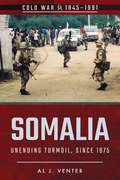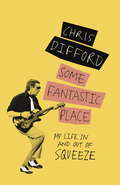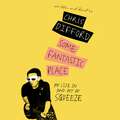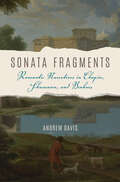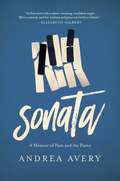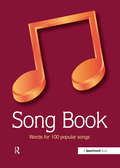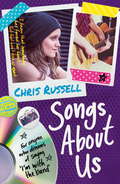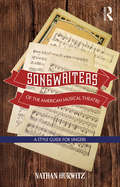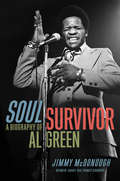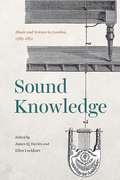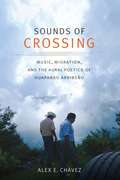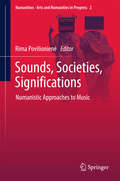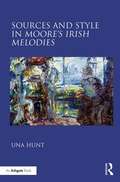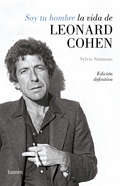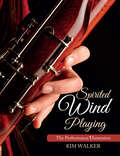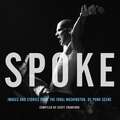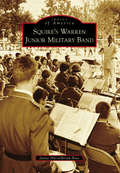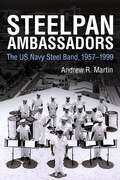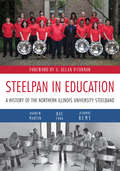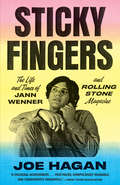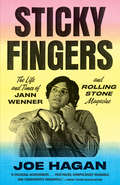- Table View
- List View
Somalia: Unending Turmoil, Since 1975 (Cold War, 1945–1991)
by Al J. VenterWhen the world held its breath It is 25 years since the end of the Cold War, now a generation old. It began over 75 years ago, in 1944long before the last shots of the Second World War had echoed across the wastelands of Eastern Europewith the brutal Greek Civil War. The battle lines are no longer drawn, but they linger on, unwittingly or not, in conflict zones such as Iraq, Somalia and Ukraine. In an era of mass-produced AK-47s and ICBMs, one such flashpoint was, and is, the Horn of Africa Few countries in Africa have had such powerful links with both the Soviet Union and United States each for several years at a stretch as Somalia. From a quiet Indian Ocean backwater that had once been an Italian colony, it remained aloof from the kind of power struggles that beset countries like Ghana, the Congo, Guinea, Algeria and others in the 1970s. Overnight, that all changed in 1969 when the army, led by Major General Siad Barre, grabbed power. His first move was to abrogate all security links he might have had with the West and to invite Moscow into his country as an ally. The Soviets moved quickly, establishing several air bases in the interior and stationing their ships in Somali ports. Baledogle, a small airport north of Mogadishu, became a major air base from where Soviet military aircraft operated through much of the Indian Ocean. An impetuous man, Siad Barre believed his links with Moscow were secure enough to annex several neighboring regions. But when he invaded Ethiopias Ogaden Province Addis Ababa was then Washingtons staunchest friend in Africas Horn the Soviets had had enough. To the consternation of the West they abandoned Somalia and embraced Ethiopia, which resulted in the Russians giving full support in the Ogaden War to Addis Ababa and establishing the largest airlift of arms to an African country since the Six-Day War.For more than a decade thereafter conditions within Somalia deteriorated. Various tribal leaders established themselves as war lords, some with Soviet support, others getting succor from Western sources. It got so bad that in 1992 the United Nations eventually stepped in with Operation Restore Hope, a multinational force created for conducting humanitarian operations in Somalia. The move was always controversial with many tribal leaders retaining either clandestine Soviet links or receiving aid from radical Arab forces that included al-Qaeda. Though the United Nations and the African Union (AU) both maintain a strong presence in the country, hostilities and killings go on.
Some Fantastic Place: My Life In and Out of Squeeze
by Chris DiffordLonglisted for the Penderyn Music Book PrizeOver the course of a thirteen-album and multi-award-winning career with Squeeze, it was clear from the very beginning that Chris Difford has few peers when it comes to smart, pithy lyricism. In Some Fantastic Place, he charts his life from his childhood in south London to becoming a member of one of Britain's greatest bands and beyond. Along the way Chris reveals the inspiration and stories behind Squeeze's best-known songs, and his greatest highs and lows from over four decades of making music.
Some Fantastic Place: My Life In and Out of Squeeze
by Chris DiffordChris Difford is a rare breed. As a member of one of London's best-loved bands, the Squeeze co-founder has made a lasting contribution to English music with hits such as 'Cool For Cats', 'Up The Junction', 'Labelled With Love', 'Hourglass' and 'Tempted'. Even before his first release in 1977, his love of writing lyrics has never wavered. Over the course of a thirteen-album career with Squeeze, it was clear from the very beginning that Difford has few peers when it comes to smart, pithy lyricism. His 'kitchen-sink drama' style has drawn plaudits from fans on both sides of the Atlantic, and his influence is keenly felt today. The likes of Lily Allen. Mark Ronson, Kasabian, Razorlight and many more have recognized the debt they owe to Squeeze's music and to Difford's way with words, while journalists were moved by his winning combination with Glenn Tilbrook to dub the pair 'The New Lennon and McCartney'.In Some Fantastic Place, Chris Difford charts his life from his early days as a dreaming boy in south London with a talent for poetry to becoming a member of one of Britain's greatest bands and beyond. Along the way he reveals the inspiration and stories behind Squeeze's best-known songs, and his greatest highs and lows from over four decades of making music.
Some Fantastic Place: My Life In and Out of Squeeze
by Chris Difford'King George Street in Charlton, South London, was my first home. Six prefabs, three pubs, a school, a church and a yard where the electricity board kept cables. Two long rows of terraced house faced each other at one end of the street; and, at the other, big houses with big doors and even bigger windows. There was a phone box next to one of the pubs and when it rang everyone came out to see who it was for. It was a tiny road - at one end of which there was Greenwich Park. It was heaven being there, its beauty always shone on me from the trees at sunsets and from the bushes in the rain. I was there in all weathers. It was 1964, I was ten years old and this is when my memory really begins. The previous decade is built up from vague recollections that lean heavily on the imagination.'Chris Difford is a rare breed. As a member of one of London's best-loved bands, the Squeeze co-founder has made a lasting contribution to English music with hits such as 'Cool For Cats', 'Up The Junction', 'Labelled With Love', 'Hourglass' and 'Tempted'. Some Fantastic Place is his evocative memoir of an upbringing in Sixties' South London and his rise to fame in one of the definitive bands of the late Seventies and early Eighties.Written and Read by Chris Difford(P) ORION PUBLISHING GROUP 2017
Sonata Fragments: Romantic Narratives in Chopin, Schumann, and Brahms
by Andrew Davis“An effort to expand sonata theory more solidly into the nineteenth-century repertoire.” —NotesIn Sonata Fragments, Andrew Davis argues that the Romantic sonata is firmly rooted, both formally and expressively, in its Classical forebears, using Classical conventions in order to convey a broad constellation of Romantic aesthetic values. This claim runs contrary to conventional theories of the Romantic sonata that place this nineteenth-century musical form squarely outside inherited Classical sonata procedures.Building on Sonata Theory, Davis examines moments of fracture and fragmentation that disrupt the cohesive and linear temporality in piano sonatas by Chopin, Brahms, and Schumann. These disruptions in the sonata form are a narrative technique that signify temporal shifts during which we move from the outer action to the inner thoughts of a musical agent, or we move from the story as it unfolds to a flashback or flash-forward. Through an interpretation of Romantic sonatas as temporally multi-dimensional works in which portions of the music in any given piece can lie inside or outside of what Sonata Theory would define as the sonata-space proper, Davis reads into these ruptures a narrative of expressive features that mark these sonatas as uniquely Romantic.“A major achievement.” —Michael L. Klein, author of Music and the Crises of the Modern Subject
Sonata: A Memoir Of Pain And The Piano
by Andrea AveryA rich and vibrant memoir that weaves chronic illness and classical music into a raw and inspiring tale of grace and determination. Andrea Avery, already a promising and ambitious classical pianist at twelve, was diagnosed with a severe case of rheumatoid arthritis (RA) that threatened not just her musical aspirations but her ability to live a normal life. As Andrea navigates the pain and frustration of coping with RA alongside the usual travails of puberty, college, sex, and just growing-up, she turns to music?specifically Franz Schubert's sonata in B-flat D960, and the one-armed pianist Paul Wittgenstein for strength and inspiration. The heartbreaking story of this mysterious sonata—Schubert’s last, and his most elusive and haunting—is the soundtrack of Andrea's story. Sonata is a breathtaking exploration of a “Janus-head miracle”—Andrea's extraordinary talent and even more extraordinary illness. With no cure for her R.A. possible, Andrea must learn to live with this disease while not letting it define her, even though it leaves its mark on everything around her—family, relationships, even the clothes she wears. And in this riveting account, she never loses her wit, humor, or the raw artistry of a true performer. As the goshawk becomes a source of both devotion and frustration for Helen Macdonald in H is for Hawk, so the piano comes to represent both struggle and salvation for Andrea in her extraordinary debut.
Song Book: Words for 100 Popular Songs
by Ffion Mercer Speechmark SpeechmarkFeaturing large clear print, the "Song Book" contains the words to 100 popular songs that are ideal for group sing-along sessions. The book is divided into six sections: traditional folk songs, choruses from old time variety, songs from World War II, post-war evergreens, hymns, and Christmas songs.
Songs About a Girl: Book 2 in a trilogy about love, music and fame
by Chris RussellHeartbreak, romance, fame and pop music - for anyone who's ever dreamed of saying 'I'm with the band'. From a Zoella Book Club friend.Two months on from the explosive finale to book one, Charlie's life is almost back to normal again: rebuilding her relationship with her father, hanging out with best mate Melissa, and worrying about GCSEs. All the while, Gabe's revelations about her mother are never far from her mind. And neither is Gabe.It's not long before Charlie is pulled back into the world of Fire&Lights - but the band seem different this time. But then again, so is she...Meanwhile, tensions between Gabe and Olly continue to run high, leading to more turmoil between the band members and press than ever before. But when Gabriel and Charlie stumble upon yet another startling truth that links them together - everything they have stands to implode in front of them.'A thoroughly absorbing tale of family relationships, friendship and betrayal. Fans of Non Pratt will love it' School Librarian
Songs About a Girl: Book 2 in a trilogy about love, music and fame (Songs About a Girl #2)
by Chris RussellHeartbreak, romance, fame and pop music - for anyone who's ever dreamed of saying 'I'm with the band'. From a Zoella Book Club friend.Two months on from the explosive finale to book one, Charlie's life is almost back to normal again: rebuilding her relationship with her father, hanging out with best mate Melissa, and worrying about GCSEs. All the while, Gabe's revelations about her mother are never far from her mind. And neither is Gabe.It's not long before Charlie is pulled back into the world of Fire&Lights - but the band seem different this time. But then again, so is she...Meanwhile, tensions between Gabe and Olly continue to run high, leading to more turmoil between the band members and press than ever before. But when Gabriel and Charlie stumble upon yet another startling truth that links them together - everything they have stands to implode in front of them.'A thoroughly absorbing tale of family relationships, friendship and betrayal. Fans of Non Pratt will love it' School Librarian
Songwriters of the American Musical Theatre: A Style Guide for Singers
by Nathan HurwitzFrom the favorites of Tin Pan Alley to today’s international blockbusters, the stylistic range required of a musical theatre performer is expansive. Musical theatre roles require the ability to adapt to a panoply of characters and vocal styles. By breaking down these styles and exploring the output of the great composers, Songwriters of the American Musical Theatre offers singers and performers an essential guide to the modern musical. Composers from Gilbert and Sullivan and Irving Berlin to Alain Boublil and Andrew Lloyd Webber are examined through a brief biography, a stylistic overview, and a comprehensive song list with notes on suitable voice types and further reading. This volume runs the gamut of modern musical theatre, from English light opera through the American Golden Age, up to the "mega musicals" of the late Twentieth Century, giving today’s students and performers an indispensable survey of their craft.
Soul Survivor: A Biography of Al Green
by Jimmy McdonoughThe bestselling author of Shakey: Neil Young's Biography presents the first in-depth biography of the legendary soul singer Al Green.Al Green has blessed listeners with some of the biggest hits of the past fifty years. "Love and Happiness," "I'm Still in Love with You," "Let's Get Married," and "I'm Tired of Being Alone" are but a sampling of the iconic songs that led a generation to embrace love in perhaps the most tumultuous period in this country's history, an unparalleled body of work that has many calling Green one of the greatest soul singers of all time. The music legend has sold over 20 million albums and been sampled by numerous rappers, and even President Obama has been known to sing a chorus or two. The now-Bishop Green is without a doubt one of the most beloved yet inscrutable figures ever to grace the popular music stage, and he has managed to magically sidestep being successfully scrutinized in print. Until now.Acclaimed journalist and author Jimmy McDonough expertly tackles this most elusive of subjects and aims to present readers with the definitive portrait of a man everyone knows but few understand. McDonough manages to break through Green's joyous veneer to reveal the contrary, tortured, and solitary individual beneath, a man who spent decades dancing an uneasy tightrope between the sacred and the profane. From his childhood in the backwaters of Arkansas to commanding the stage in front of throngs of lusting fans to addressing a very different audience from the pulpit of his own church, readers will bear witness to the creation of some of the most electrifying soul music ever recorded; learn the hitherto untold real story behind Green's colorful down-home Memphis label, Hi Records; and--by way of countless in-depth interviews with major players in the story, some speaking for the very first time--unravel one of the last great mysteries in popular music: Al Green.
Sound Knowledge: Music and Science in London, 1789-1851
by James Q. Davies Ellen LockhartWhat does it mean to hear scientifically? What does it mean to see musically? This volume uncovers a new side to the long nineteenth century in London, a hidden history in which virtuosic musical entertainment and scientific discovery intersected in remarkable ways. Sound Knowledge examines how scientific truth was accrued by means of visual and aural experience, and, in turn, how musical knowledge was located in relation to empirical scientific practice. James Q. Davies and Ellen Lockhart gather work by leading scholars to explore a crucial sixty-year period, beginning with Charles Burney’s ambitious General History of Music, a four-volume study of music around the globe, and extending to the Great Exhibition of 1851, where musical instruments were assembled alongside the technologies of science and industry in the immense glass-encased collections of the Crystal Palace. Importantly, as the contributions show, both the power of science and the power of music relied on performance, spectacle, and experiment. Ultimately, this volume sets the stage for a new picture of modern disciplinarity, shining light on an era before the division of aural and visual knowledge.
Sounds of Crossing: Music, Migration, and the Aural Poetics of Huapango Arribeño
by Alex E. ChávezIn Sounds of Crossing Alex E. Chávez explores the contemporary politics of Mexican migrant cultural expression manifest in the sounds and poetics of huapango arribeño, a musical genre originating from north-central Mexico. Following the resonance of huapango's improvisational performance within the lives of audiences, musicians, and himself—from New Year's festivities in the highlands of Guanajuato, Mexico, to backyard get-togethers along the back roads of central Texas—Chávez shows how Mexicans living on both sides of the border use expressive culture to construct meaningful communities amid the United States’ often vitriolic immigration politics. Through Chávez's writing, we gain an intimate look at the experience of migration and how huapango carries the voices of those in Mexico, those undertaking the dangerous trek across the border, and those living in the United States. Illuminating how huapango arribeño’s performance refigures the sociopolitical and economic terms of migration through aesthetic means, Chávez adds fresh and compelling insights into the ways transnational music-making is at the center of everyday Mexican migrant life.
Sounds, Societies, Significations
by Rima PovilionienėThis edited book covers many topics in musicological literature, gathering various approaches to music studies that encapsulate the vivid relation music has to society. It focusses on repertoires and geographical areas that have not previously been well frequented in musicology. As readers will see, music has many roles to play in society. Music can be a generator of social phenomena, or a result of them; it can enhance or activate social actions, or simply co-habit with them. Above all, music has a stable position within society, in that it actively participates in it. Music can either describe or prescribe social aspects; musicians may have a certain position/role in society (e. g. , the "popstar" as fashion leader, spokesman for political issues, etc. ). Depending on the type of society, music may have a certain "meaning" or "function" (music does not mean the same thing everywhere in the world). Lastly, music can define a society, and it is not uncommon for it to best define a particular historical moment. Case-studies in this work provide visibility for musical cultures that are rarely exposed in the dominant musicological discourse. Several contributions combine musicological analysis with "insider-musician" points of view. Some essays in the collection address the cultural clash between certain types of music/musicians and the respective institutional counterparts, while certain contributing authors draw on experimental research findings. Throughout this book we see how musics are socially significant, and - at the same time - that societies are musically significant too. Thus the book will appeal to musicologists, cultural scholars and semioticians, amongst others.
Sources and Style in Moore’s Irish Melodies
by Una HuntOnce regarded as Ireland’s national bard, Thomas Moore's lasting reputation rests on the ten immensely popular collections of drawing-room songs known as the Irish Melodies, published between 1808 and 1834. Moore drew on anthologies of ancient music, breathing new life into the airs and bringing them before a global audience for the very first time. Recognizing the unique beauty of the airs as well as their symbolic significance, these qualities were often interwoven into the verses providing potent political commentary along with a new cultural perspective. At home and abroad, Moore’s Melodies created a realm of influence that continued to define Irish culture for many decades to come. Notwithstanding the far-reaching appeal and success of the collections, Moore has only recently begun to receive serious attention from scholars. Una Hunt provides the first detailed study of Moore’s Irish Melodies from a combined musical and literary standpoint by drawing on a practical understanding and an unrivalled performance experience of the songs. The initial two chapters contextualize Moore and his songs through a detailed examination of their sources and style while the following chapters concentrate on the collaborative work provided by the composers Sir John Stevenson and Henry Rowley Bishop. Chapters 5 and 6 reappraise musical sources and Moore’s adaptation of these, supported and illustrated by the Table of Sources in the Appendix.
Soy tu hombre. La vida de Leonard Cohen
by Sylvie Simmons«Si queremos expresar la derrota común, procuremos hacerlo dentro de los límites estrictos de la dignidad y la belleza.»Leonard Cohen Cuando aún era un adolescente, Leonard Cohen se asomó un día al balcón de su casa en Montreal y oyó unos acordes de guitarra. El chico sentado en la hierba tocaba flamenco y durante unos días se convirtió en el primer maestro de Leonard. Desde entonces, paso a paso, Leonard Cohen fue forjando una carrera en la que los momentos estelares se alternaron con épocas oscuras, y en la que la música fue fiel aliada de la escritura. Canciones como «Suzane», «So Long, Marianne» o «Chelsea Hotel» nos acompañaron a lo largo del siglo XX y los poemas de Libro del anhelo resumen en pocas líneas emociones que no tienen fecha de caducidad. Muchos veneran a ese hombre que en 2011 fue galardonado con el Premio Príncipe de Asturias y que, hasta el día de su muerte, el 7 de noviembre de 2016, siguió dando la vuelta al mundo para estar cerca de su público. Cuando alguien le tachaba de pesimista, Cohen sonreía y soltaba una de sus frases memorables, que constituyen una lección de vida. Revisando estas palabras, entrevistando a la gente que le era próxima y reuniendo datos inéditos que el propio autor le proporcionó sobre su trayectoria personal y profesional, Sylvie Simmons reunió las piezas que componían al hombre y al artista y ahora, tras la muerte de Cohen, lo ha completado hasta lograr su mejor retrato.
Spirited Wind Playing: The Performance Dimension
by Kim Walker Peter J. SchoenbachPeppered with tips, helpful hints, and personal anecdotes to illustrate real-life application, this performance guide is essential for any wind player interested in taking his or her virtuosity to the next level. Internationally renowned bassoonist Kim Walker has compiled into one book the teachings and exercises that have made her known as an expert on bassoon performance, practice, and instruction. From basics like posture, breathing techniques, and articulation to a survey of the performance practices of key woodwind and brass masters, Walker includes an analysis of each technique along with images and exercises that present the mechanics of each method.
Spoke: Images and Stories from the 1980s Washington, DC Punk Scene
by Scott Crawford"The pictures, which include some posed portraits but are mostly concert shots, are the chief attraction. They freeze moments of adolescent release, vein-bulging intensity and sweaty communion that fuses performer and audience...Vivid and evocative."--Washington Post"Scott Crawford, the man behind the acclaimed documentary Salad Days, has given us another taste of the best-kept secret of 80s in his new book Spoke: Washington DC’s hardcore punk scene."--Dazed"With music by Minor Threat, Void, Rites of Spring, Government Issue, and many others propelling the story of hardscrabble, Reagan-era D.C. as the hotbed for a new artistic outlet in Salad Days, Crawford saw the book as a way to scoop up important narrative from the cutting-room floor and find a new home for it."--Fast Company"Pockmarked with burned-out buildings and boarded-over storefronts, Northwest DC was once home to a vibrant and sometimes violent punk movement beginning in the early 1980s. For geeky 12-year-old Scott Crawford, that changed everything: He chucked comic books for punk rock and self-published a music zine from his mother’s kitchen table in Silver Spring. This month, Crawford releases a book about those days, Spoke--a companion to his 2014 documentary, Salad Days--featuring stories from local players such as Dave Grohl, Henry Rollins, and Ian MacKaye."--Washingtonian Magazine"Spoke...adroitly uses both photographs and oral histories to capture the importance of what can best be described as a cultural revolution within the nation’s capital."--Shepherd Express"This coffee table version of the documentary [Salad Days] follows the D.C. scene’s often politically-charged brand of punk rock, from Bad Brains to Jawbox, and of course the legendary Fugazi. And there’s even the near-forgotten SOA, whose frontman Henry Rollins took his D.C. energy to L.A. where he stepped in as the singer for Black Flag."--Yellow Scene Magazine"A must-have for any rock historian or pop-culture buff...The perfect punk coffee table book."--Shockwave Magazine"Highly recommended...A must read for punk fans."--Chorus.fm/HiFiNoise"A worthy addition to the growing amount of literature on the American hardcore/punk scene, Spoke will look great on any aging punks’ coffee table as a document to a vital, electric time."--Ink19.com"A forthright testament to a kaleidoscopic community. This is a rounded collection, with surprises on every page...It’s collection that rocks."--Shelf Awareness for ReadersThe Washington, DC punk music scene of the 1980s gave birth to influential bands like Bad Brains, Minor Threat, and Fugazi. Here that era is portrayed in its purest form: an oral history by the creators themselves, including nearly two hundred photographs capturing the power and spirit of this politically progressive corner of American underground music. This stunning and intimate collection features rare images from Jim Saah, Cynthia Connolly, Bert Queiroz, and many others who documented this vibrant community. Compiled by Scott Crawford-whose critically acclaimed film Salad Days provided an unprecedented exploration into the 1980s DC punk scene-Spoke delves deeper into one of the most dynamic movements in US music history.Featuring: BAD BRAINS, THE TEEN IDLES, BLACK MARKET BABY, SOA, MINOR THREAT, GOVERNMENT ISSUE, VOID, IRON CROSS, THE FAITH, SCREAM, MARGINAL MAN, GRAY MATTER, BEEFEATER, KING FACE, RITES OF SPRING, DAG NASTY, EMBRACE, SOULSIDE, FIRE PARTY, SHUDDER TO THINK, IGNITION, FUGAZI, SWIZ, THE NATION OF ULYSSES, and JAWBOX.
Squire's Warren Junior Military Band (Images of America)
by Janne Hurrelbrink-BiasSquire�s Warren Junior Military Band had an emotional appeal that endeared it to audiences of all ages. Considered one of northeastern Ohio�s richest artistic assets, the band�s members, who hailed from the entire region, were filled with pride, tradition, patriotism, and a sense of discipline. The original VFW Boys Band was formed in 1927, with Donald W. �Squire� Hurrelbrink becoming director in 1930. In 1957, the name changed to the Warren Junior Military Band. Travels took the band from the East Coast to the West Coast, from Canada to the Gulf of Mexico, and to audiences abroad, amassing an impressive record of Midwest, Canadian, European, American Legion, and VFW National Championships. Throughout the years, the band performed at numerous prestigious events and for an impressive number of dignitaries, as well as a phenomenal number of local, civic, and patriotic festivities. Members were privileged to have Squire�s leadership for 66 years. Alumni continued to lead, direct, and pass on the values they learned under Squire�s guidance. Finally, in 2010, the band ended its long legacy.
Steelpan Ambassadors: The US Navy Steel Band, 1957–1999 (Caribbean Studies Series)
by Andrew R. Martin“Maybe you won't like steel band. It's possible. But it's been said that the Pied Piper had a steel band helping him on his famous visit to Hamelin.” When the US Navy distributed this press release, anxieties and tensions of the impending Cold War felt palpable. As President Eisenhower cast his gaze towards Russia, the American people cast their ears to the Atlantic South, infatuated with the international currents of Caribbean music. Today, steelbands have become a global phenomenon; yet, in 1957 the exotic sound and the unique image of the US Navy Steel Band was one-of-a-kind. Could calypso doom rock 'n' roll? Band founder Admiral Daniel V. Gallery thought so and envisioned his steelband knocking “rock 'n' roll and Elvis Presley into the ash can.” From 1957 until their disbandment in 1999, the US Navy Steel Band performed over 20,000 concerts worldwide. In 1973, the band officially moved headquarters from Puerto Rico to New Orleans and found the city and annual Mardi Gras tradition an apt musical and cultural fit. The band brought a significant piece of Caribbean artistic capital—calypso and steelband music—to the American mainstream. Its impact on the growth and development of steelpan music in America is enormous. Steelpan Ambassadors uncovers the lost history of the US Navy Steel Band and provides an in-depth study of its role in the development of the US military's public relations, its promotion of goodwill, its recruitment efforts after the Korean and Vietnam Wars, its musical and technological innovations, and its percussive propulsion of the American fascination with Latin and Caribbean music over the past century.
Steelpan in Education: A History of the Northern Illinois University Steelband
by Andrew Martin Ray Funk Jeannine RemyFounded by Al O'Connor in 1973, the steelband program at Northern Illinois University was the first of its kind in the United States. Thanks to the talent and dedication of O'Connor, Cliff Alexis, Liam Teague, Yuko Asada, and a plethora of NIU students and staff members, the program has flourished into one of the most important in the world. Having welcomed a variety of distinguished guest artists and traveled to perform in locales around the US and in Taiwan, Trinidad, and South Korea, the NIU Steelband has achieved international acclaim as a successful and unique university world music program. This fascinating history of the NIU Steelband traces the evolution of the program and engages with broader issues relating to the development of steelband and world music ensembles in the American university system. In addition to investigating its past, Steelpan in Education looks to the future of the NIU Steelband, exploring how it attracts and trains new generations of elite musicians who continue to push the boundaries of the steelpan. This study will appeal to musicians, music educators, ethnomusicologists, and fans of the NIU Steelband.
Sticky Fingers: The Life and Times of Jann Wenner and Rolling Stone Magazine
by Joe HaganThe first and only biography of Jann Wenner, the iconic founder of Rolling Stone magazine, and a romp through the hothouses of rock and roll, politics, media, and Hollywood, from the Summer of Love to the Internet age.Lennon. Dylan. Jagger. Belushi. Leibovitz. The story of Jann Wenner, Rolling Stone's founder, editor, and publisher, is an insider's trip through the backstages of storied concert venues, rock-star hotel rooms, and the political ups and downs of the latter half of the Twentieth Century, right up through the digital age: connecting the counterculture of Haight Ashbury to the "straight world." Supplemented by a cache of extraordinary documents and letters from Wenner's personal archives, Sticky Fingers is the story of a mercurial, wide-eyed rock and roll fan of ambiguous sexuality but unambiguous ambition who reinvents youth culture, marketing the libertine world of the late sixties counterculture in a stylish, glossy package that would stand for decades as a testament to the cultural power of American youth. Joe Hagan captures in stunning detail the extraordinary lives constellated around a magazine that began as a scrappy rebellion and became a locus of power, influence, and access--using hundreds of hours of reporting and exclusive interviews. The result is a fascinating and complex portrait of Jann Wenner that is also a biography of popular culture, celebrity, music, and politics in America over the last fifty years.
Sticky Fingers: The Life and Times of Jann Wenner and Rolling Stone Magazine
by Joe HaganThe first and only biography of Jann Wenner, the iconic founder of Rolling Stone magazine, and a romp through the hothouses of rock and roll, politics, media, and Hollywood, from the Summer of Love to the Internet age.Lennon. Dylan. Jagger. Belushi. Leibovitz. The story of Jann Wenner, Rolling Stone's founder, editor, and publisher, is an insider's trip through the backstages of storied concert venues, rock-star hotel rooms, and the political ups and downs of the latter half of the Twentieth Century, right up through the digital age: connecting the counterculture of Haight Ashbury to the "straight world." Supplemented by a cache of extraordinary documents and letters from Wenner's personal archives, Sticky Fingers is the story of a mercurial, wide-eyed rock and roll fan of ambiguous sexuality but unambiguous ambition who reinvents youth culture, marketing the libertine world of the late sixties counterculture in a stylish, glossy package that would stand for decades as a testament to the cultural power of American youth. Joe Hagan captures in stunning detail the extraordinary lives constellated around a magazine that began as a scrappy rebellion and became a locus of power, influence, and access--using hundreds of hours of reporting and exclusive interviews. The result is a fascinating and complex portrait of Jann Wenner that is also a biography of popular culture, celebrity, music, and politics in America over the last fifty years.
Sticky Fingers: The Life and Times of Jann Wenner and Rolling Stone Magazine
by Joe HaganA delicious romp through the heyday of rock and roll and a revealing portrait of the man at the helm of the iconic magazine that made it all possible, with candid look backs at the era from Mick Jagger, Keith Richards, Elton John, Bono, Bruce Springsteen, Paul McCartney, and others. The story of Jann Wenner, Rolling Stone's founder, editor, and publisher, and the pioneering era he helped curate, is told here for the first time in glittering, glorious detail. Joe Hagan provides readers with a backstage pass to storied concert venues and rock-star hotel rooms; he tells never before heard stories about the lives of rock stars and their handlers; he details the daring journalism (Tom Wolfe, Hunter S. Thompson, P.J. O’Rourke) and internecine office politics that accompanied the start-up; he animates the drug and sexual appetites of the era; and he reports on the politics of the last fifty years that were often chronicled in the pages of Rolling Stone magazine. Supplemented by a cache of extraordinary documents and letters from Wenner's personal archives, Sticky Fingers depicts an ambitious, mercurial, wide-eyed rock and roll fan of who exalts in youth and beauty and learns how to package it, marketing late sixties counterculture as a testament to the power of American youth. The result is a fascinating and complex portrait of man and era, and an irresistible biography of popular culture, celebrity, music, and politics in America.
Stomping the Blues
by Albert MurrayIn this classic work of American music writing, renowned critic Albert Murray argues beautifully and authoritatively that &“the blues as such are synonymous with low spirits. Not only is its express purpose to make people feel good, which is to say in high spirits, but in the process of doing so it is actually expected to generate a disposition that is both elegantly playful and heroic in its nonchalance.&” In Stomping the Blues Murray explores its history, influences, development, and meaning as only he can. More than two hundred vintage photographs capture the ambiance Murray evokes in lyrical prose. Only the sounds are missing from this lyrical, sensual tribute to the blues.
